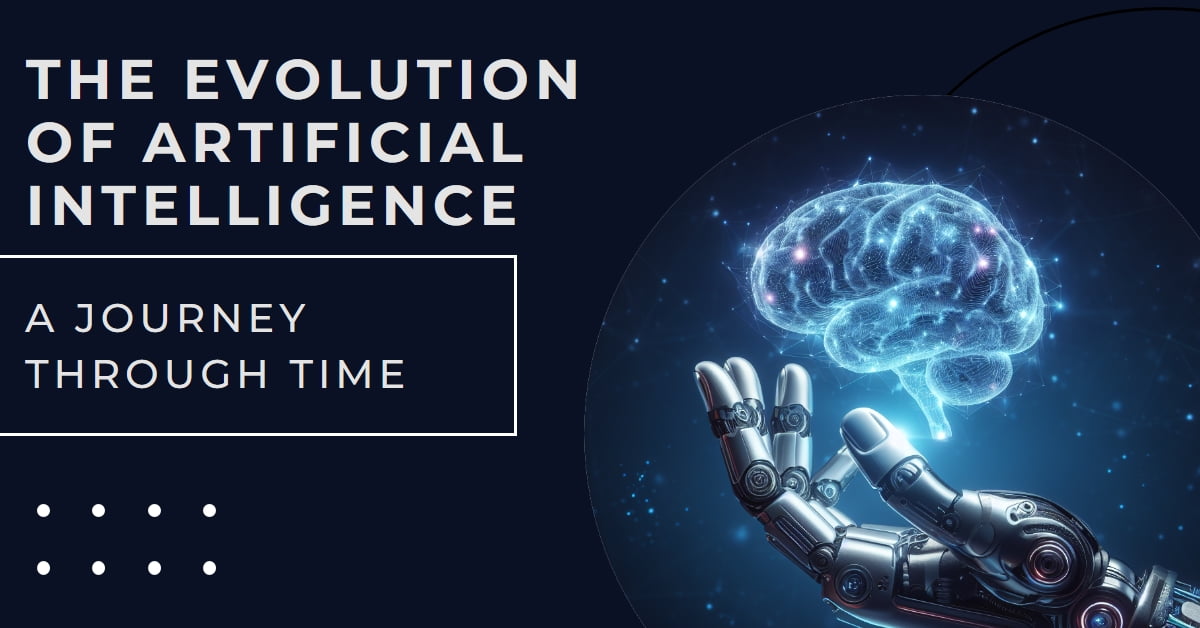When Did Artificial Intelligence First Start?
Table of Contents
The human fascination with creating artificial intelligence (AI) is as old as our dreams of flight and immortality. From myth and legend to science fiction and cutting-edge research, the question of “When did AI first start?” has captivated us for centuries. But pinpointing a precise birthdate for this complex technology is surprisingly tricky, a journey through a labyrinth of ideas, experiments, and incremental progress.
Ancient Seeds of Intelligence:
The seeds of AI were sown long before the first computer hummed to life. Ancient Greek myths like Hephaestus’ self-operating mechanical servants and Pygmalion’s Galatea, brought to life by his love, hinted at the desire to create artificial minds. Medieval automata, intricate clockwork figures performing pre-programmed actions, offered glimpses of mechanical intelligence. And philosophers like Alan Turing, centuries later, laid the theoretical groundwork for machines that could “think.”

The Dawn of the Modern AI Era:
The 20th century ushered in a new era in the quest for AI. Alan Turing’s 1950 Turing Test, a test of a machine’s power to display intelligent behavior equivalent to, or inappreciable from, that of a human, became a landmark. This, along with the development of the first computers and the blossoming field of computer science, set the stage for the first “true” AI programs.
Early Pioneers and Landmark Programs:
The 1950s and 1960s saw the birth of groundbreaking AI programs like Samuel’s checkers-playing program and Newell & Simon’s Logic Theorist. These programs, while rudimentary by today’s standards, were remarkable feats of their time, demonstrating the ability of machines to learn, solve problems, and even exhibit some level of creativity.
The AI Rollercoaster: Boom, Bust, and Rebirth:
The initial excitement around AI in the 1950s and 1960s was followed by a period of disillusionment in the 1970s and 1980s. Limited computing power, theoretical roadblocks, and over-optimistic expectations led to a “winter” for AI research. However, the seeds planted earlier continued to grow, leading to a renaissance in the late 1980s and 1990s.
The Rise of Deep Learning and the Modern AI Explosion:
The late 20th century saw the rise of deep learning, a powerful approach to AI based on artificial neural networks motivated by the human brain. This, combined with the exponential growth of computing power and the availability of vast quantities of data, fueled a new AI revolution. From self-driving cars to medical diagnosis algorithms and chatbots to language translation software, AI has become a ubiquitous part of our lives.

The Future of AI: Beyond the Binary of Start and End
So, when did AI first start? The answer, like many things in life, isn’t a singular point in time. It’s a story of continuous evolution, a tapestry woven from ancient ideas, technological advancements, and the relentless human desire to understand and create intelligence. To say AI “started” in any one year would be an oversimplification. It’s more accurate to say it’s been a journey, a constant dialogue between humans and machines, pushing the boundaries of what’s possible.
Looking Ahead: Beyond the Binary
Let’s now not focus on an organization release date but on the super opportunities ahead. Artificial intelligence promises to revolutionize every component of our lives, from healthcare and education to transportation and sustainability. As we pass ahead, it is vital to keep in mind that AI isn’t a panacea or a dystopian risk. It is a device, an effective device that may be used for excellent or evil, relying on our alternatives and values.
Embrace the journey and shape the future.
The story of AI isn’t just about the past; it’s about the present and the future. As we guide the ever-evolving landscape of AI, let’s stay curious, engaged, and responsible. Let’s embrace the journey of this remarkable technology, ensuring it serves humanity’s best interests and helps us build a brighter, more intelligent future.
FAQs:
Is there really a single “start date” for AI?
Think of it like building a towering skyscraper, not flipping a switch. We didn’t suddenly have “intelligent machines” one day. The seeds of AI were sown in ancient myths, nurtured by philosophers like Turing, and then sprouted into early programs like Logic Theorist. Each step, from clockwork automata to deep learning, contributed to the evolution of AI, making it more than just a single point in time.
Why did AI experience a “winter” in the 70s and 80s?
Imagine climbing a mountain – sometimes you encounter treacherous slopes. Over-optimistic expectations, limited computing power, and theoretical roadblocks led to an “AI winter.” But like a tenacious climber, researchers persisted, refining techniques and waiting for the technological landscape to catch up. This perseverance paved the way for the AI renaissance we’re experiencing today.
Where is AI headed in the future, and how can we be part of the story?
The future of artificial intelligence is as big as the universe. From healthcare breakthroughs to self-driving cars, artificial intelligence will reshape every aspect of our lives. But it’s important to realize that AI is a tool, not a savior or villain. The choices we make and the values we communicate will determine how this powerful technology shapes our world. So, let us remain committed, curious, and responsible to ensure that AI becomes a force for good and leads us toward a better, smarter future.











